United States and world energy systems are in a period of tremendous change, driven by technological advances, cultural and social pressures, and government policies to respond to the threat of climate change. Studying the history of energy illuminates this current moment, helping us to identify what questions to ask, to see what trends and patterns might repeat themselves, and to understand what is truly new and unprecedented.
Through curated teaching units and a library of curated teaching materials, Energy History Online seeks to promote energy literacy among students, practitioners, and the interested public. Only by understanding the complex historical forces that created our current predicament can we hope to create a more just and sustainable energy system in the future.
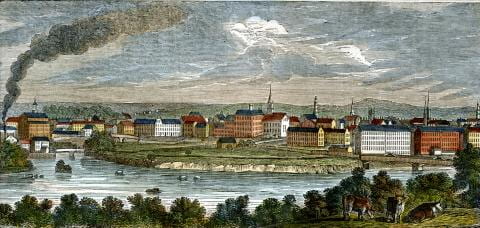
Water Power, Industrial Manufacturing, and Environmental Transformation in 19th-Century New England
From the time Puritans settled in New England in the seventeenth century to the decades after the American Revolution, the region’s landscape was dotted by small mills that used water power for sawing wood, grinding grain, and carding wool to meet the needs of local communities.
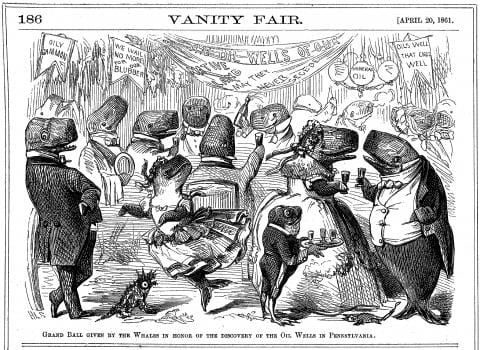
Harvesting Light: New England Whaling in the Nineteenth Century
This module covers the New England-based commercial whale fishery in the middle of the nineteenth century.
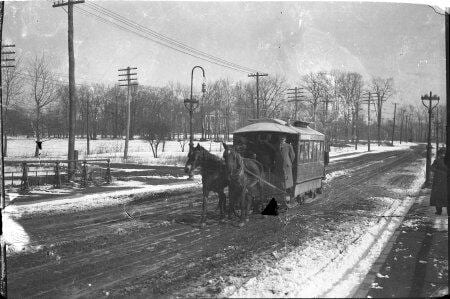
Animal Power
After human muscle power, domesticated animals provided the most accessible, economical and efficient source of power available to Americans in the nineteenth century.
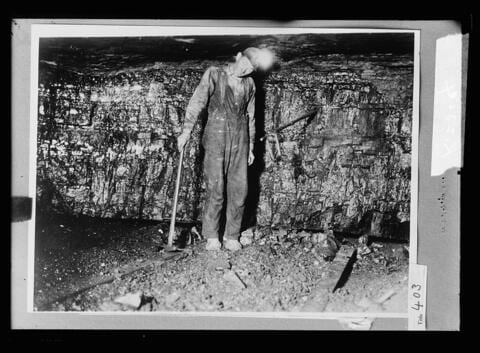
The Rise of Coal in the 19th-Century United States
Coal can easily appear mundane to modern eyes—an inferior product from a bygone era.
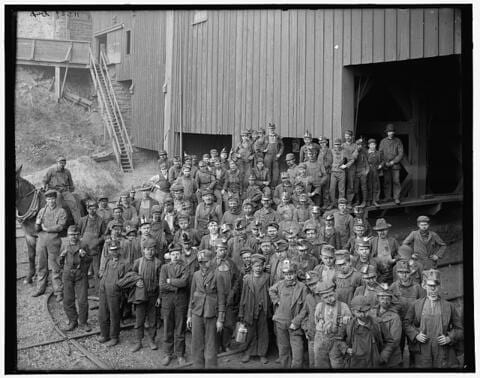
Coal Mining and Labor Conflict
The rapidly increasing use of coal in the late nineteenth century required hundreds of thousands of workers to dig that coal out of the ground, sort and load it into railroad cars, and ship it to the urban and industrial centers that consumed it.
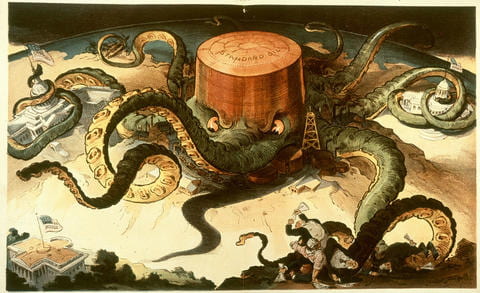
Antitrust and Monopoly
In 1859, the completion of the first successful petroleum well in northwestern Pennsylvania set off a wild speculative oil boom. Independent oil producers dominated this early oil extraction. Petroleum moved to markets first on wagons traveling over rough roads, and then by means of pipelines and railroads. Corporate consolidation in the refining stage, however, soon created a bottleneck in the supply chain.
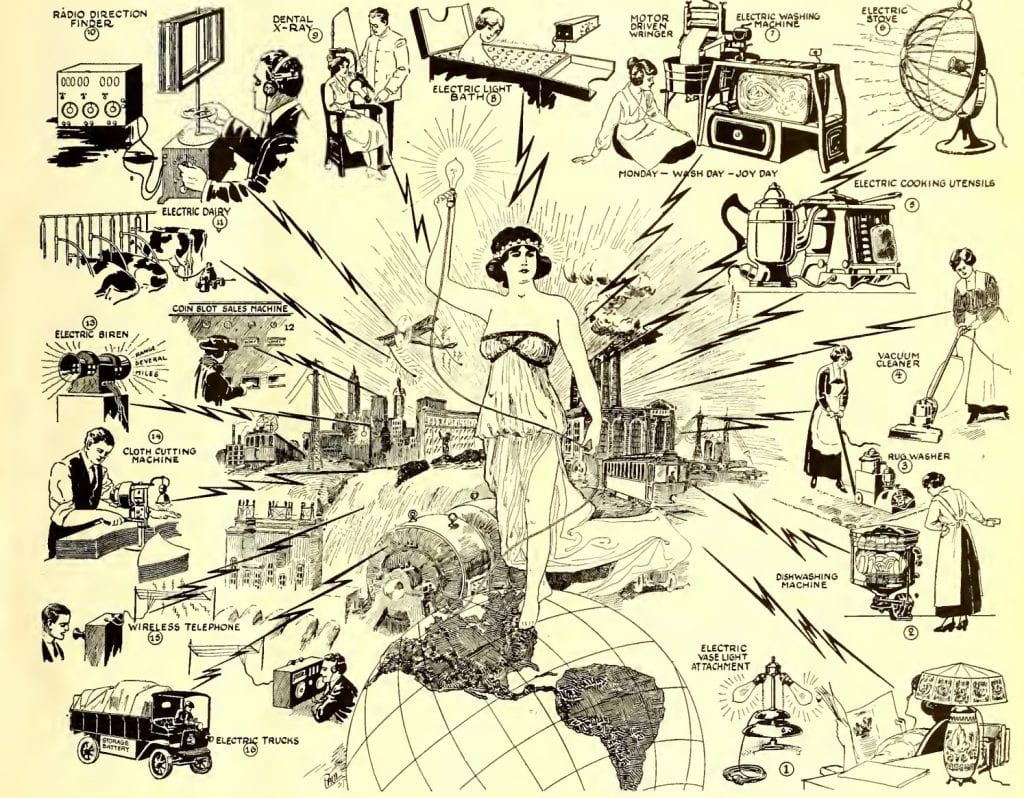
Electricity Consumption: Culture, Gender and Power
Patterns of energy consumption started to change significantly in the first decades of the twentieth century. As electrical service became increasingly available in urban areas, middle class households experimented with and adopted new electrical appliances.
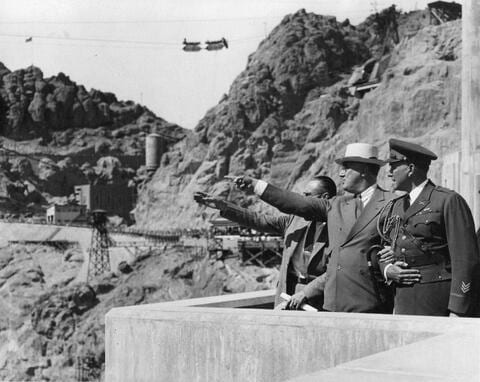
The Big Dam Era
The era of large-scale hydroelectric dam building spanned roughly four decades, from the 1930s through the 1960s. Symbolically, the era commenced with Hoover Dam’s dedication in 1935. Hoover, however, was a culmination of larger technological and political changes.

The End of the Big Dam Era
Large-scale dams suggested engineering mastery over the vagaries of nature and structural social and economic conditions. They enthralled Americans who read into them possibilities for a new, emergent modernity that mixed rural electrification, public power, and industrial growth. But economic growth came at great social and environmental cost.
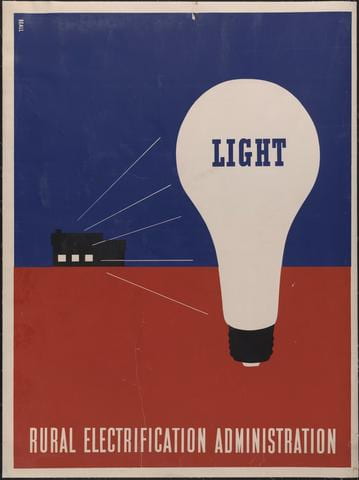
Electricity and the Public Good: Private-Public Power Debates in the 1920s-30s
Who should develop and control electric power resources? In the 1920s and 1930s, private electric companies struggled with state and federal governments over how the vital new infrastructure would be built and made accessible.
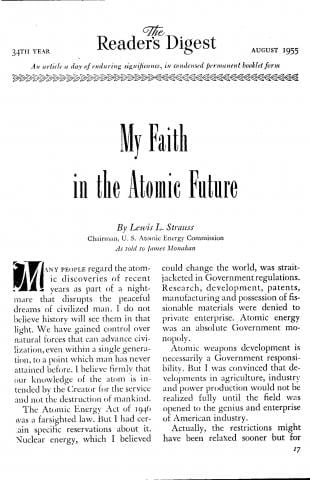
Nuclear Energy, the Environment, and Debating the Costs of Progress
Almost since its inception, nuclear technology has raised challenging questions about the goals, costs, and the very nature of progress. Would nuclear technologies lead to a world of cheap energy that freed humans from the demands of physical labor—or to a world of dystopic, technocratic rule and environmental ruin?
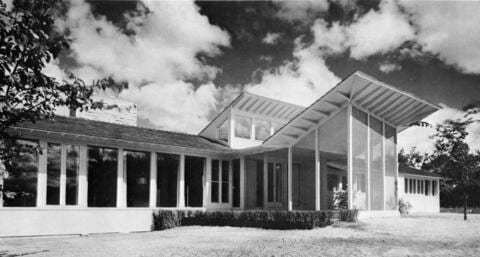
Solar Architecture and Solar Design, 1930s-1950s
From right before World War II until the late 1950s, American architects and engineers experimented with solar house heating and solar houses were built across the Midwest, Northeast, and Southwestern United States. Working with international aid organizations such the Ford Foundation, architects also were involved with solar technology transfer as part of development projects in India, South Africa, and Morocco.
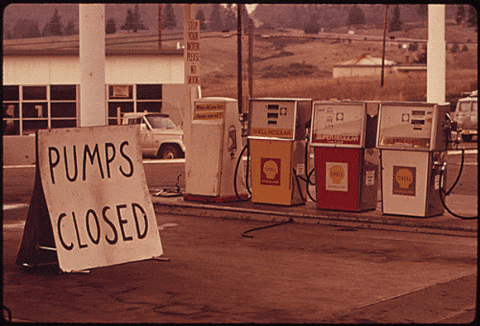
The Oil Shocks of the 1970s
In October 1973, the Arab state members of the Organization of Petroleum Exporting Countries (OPEC) declared that they would cut oil production, and limit exports to certain countries, to protest the United States’ support for Israel in the Yom Kippur War. American policymakers believed that this decision, which they called an “embargo,” would raise the market price of oil as supplies diminished and would lead to shortages of oil in the United States.
Solar Energy In the 1970s
During the postwar period, American consumers enjoyed a high-energy lifestyle predicated on the consumption of cheap fossil fuels. But when the 1973-74 oil shocks caused gasoline and crude oil prices to quadruple, it raised widespread anxiety about the United States’ energy future. Would the nation return to its normal energy abundance? Or would it have to chart a different path to a radically new energy future? For many, solar power represented one of the most promising forms of alternative energy.
Justice and Policymaking
Environmental and energy justice movements emerged in the 1970s–80s through grassroots activism, highlighting the disproportionate environmental burdens on low-income and minority communities.
Environmental Justice and Indigenous Communities
Native American and Indigenous communities have engaged with energy justice, responding in diverse ways to environmental harm, industrial extraction, and opportunities for sovereignty and economic development. Concept of energy justice—focused on distributional, recognition-based, and procedural justice—illustrate how Indigenous activism has addressed these dimensions through case studies like uranium mining, oil pipelines, and green energy transitions.



